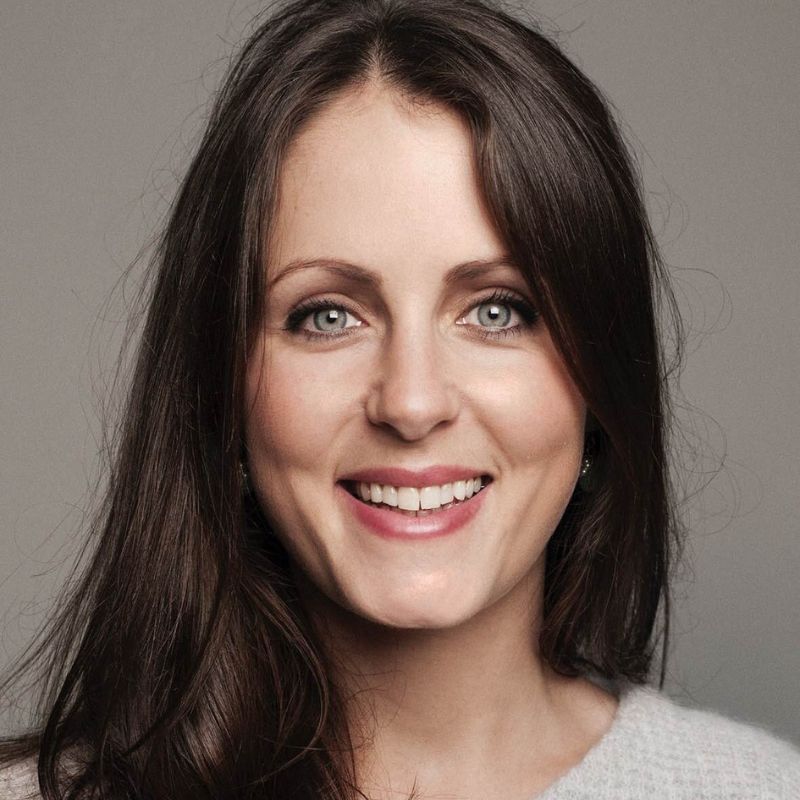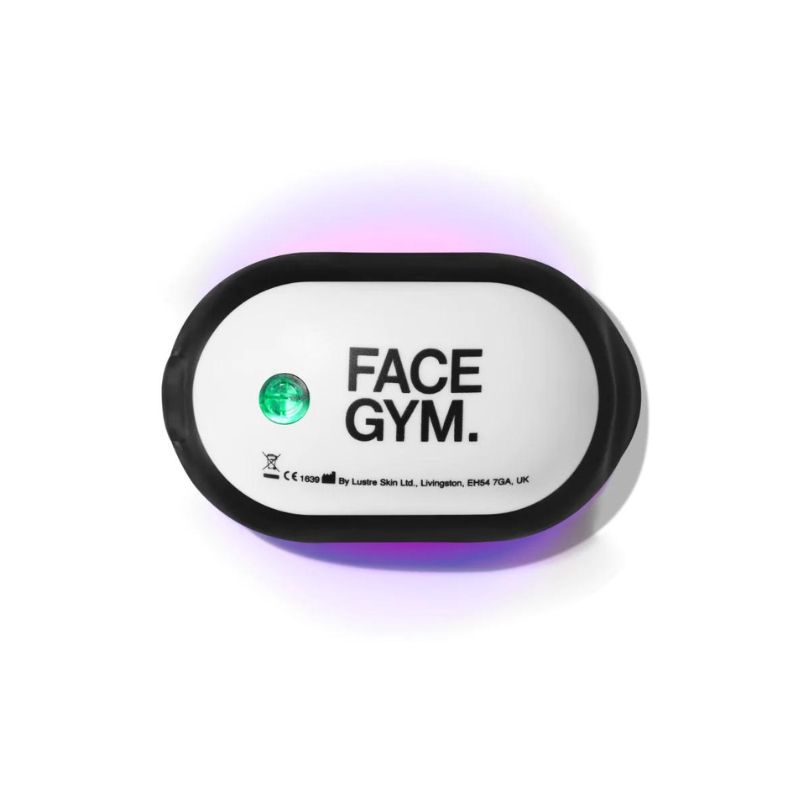How does light therapy work? The science behind these popular skin treatments
Wondering "how does light therapy work?" We asked four skin experts to shine a light on the topic of LED...


Skincare is complex and so answering the question "how does light therapy work?" requires explaining what light therapy actually is.
Perhaps you’ve seen those robotic-looking red light therapy devices doing the rounds on Instagram and wondered what on earth they are. Or maybe a nearby salon has recently started offering LED facials, but you’re not sure what those actually entail.
It's easy to be drawn in by brands that promise a device will deliver your best skin yet and bamboozle you with scientific-sounding claims, persuading you to spend vast amounts of money without really grasping what it does, how it works and whether it's right for you.
Without any know-how, light therapy can be a confusing treatment. For one thing, it’s (unhelpfully) referred to by two different names; you may hear it called either light therapy or by the acronym LED, which stands for light emitting diode. But for a more thorough understanding of how light therapy works, we’ve enlisted the help of four trusted skin experts to answer the most common LED-related questions.
How does light therapy work? Experts explain
What is light therapy?
“Light therapy is a non-invasive treatment that uses specific wavelengths of light to target various skin concerns and promote skin health,” explains Dr. Ifeoma Ejikeme, medical consultant, skin expert and the founder of award-winning Adonia Medical Clinic. Non-invasive means that it doesn’t involve anything physically entering or breaking the skin (unlike Botox, microneedling or filler).
Instead, the device is placed close to or on top of your skin and “involves exposure to light-emitting diodes (LEDs) or other light sources to stimulate cellular responses in the skin,” Dr. Ejikeme adds. The type of light source and the specific wavelengths used are key to how successful the treatment is. This isn’t just any old light – and you won’t get the same results from simply sitting under any old lamp or spending time in the sunshine.

Dr Ifeoma Ejikeme is a consultant, skin expert and founder of the Adonia Medical Clinic. She was voted Best Aesthetic Doctor in the UK for 2023.
How does light therapy work and what does it do for the skin?
There are different types of light therapy, and each works in varying ways within the skin to treat a range of concerns. The most commonly used forms of light therapy are red and blue, as these have the most clinical evidence behind them to prove that they work.
Sign up to our free daily email for the latest royal and entertainment news, interesting opinion, expert advice on styling and beauty trends, and no-nonsense guides to the health and wellness questions you want answered.
So how does light therapy work for each of these treatments? “Blue light can kill the bacteria that drive acne,” says Dr. Justine Hextall, consultant dermatologist and medical director of Tarrant Street Clinic. With this bacteria no longer present, it’s less likely that blemishes will form. “It also reduces activity in the sebaceous gland that produces oil in acne-prone skin,” Dr. Hextall adds. It’s best for anyone who finds that their skin is excessively oily, or who is struggling with menopausal breakouts, and wants to reduce existing blemishes as well as prevent new ones from cropping up. If done properly, light therapy for acne can be beneficial.
If the signs of ageing are a more pressing bugbear for you, then red light is best. These are the kinds of things you want to know before buying a red light therapy device. “Red light helps stimulate the production of collagen and elastin, boosting wound healing and tissue repair and possibly helping to reduce the appearance of fine lines and wrinkles,” says Dr. Sophie Shotter, aesthetic doctor and founder of Illuminate Skin Clinic.
If you really want to get into the science of how light therapy works, Maeve O'Sullivan, Traditional Chinese Medicine practitioner and co-founder of Escapada Health sums it up for us. “Red light exposure is thought to produce a positive biochemical effect in your cells that strengthens the mitochondria, which is where the energy of our cells is created,” she explains. “By increasing the energy of the mitochondria, cells may function more effectively, as well as rejuvenate and repair themselves.” Think of it like giving your skin the energy and tools it needs to behave more like its younger self to smooth out wrinkles.
You may also come across green and yellow light therapy treatments, but there’s not been enough research yet to back up their claims. “There is emerging evidence for the anti-inflammatory effects of yellow light and the potential collagen-boosting effects of green light,” Dr. Hextall explains. This is an exciting prospect; there could be even more light therapy options coming in the next few years.

Dr. Hextall is a consultant dermatologist and has been working in the NHS for more than a decade. She is the medical director of the Tarrant Street Clinic and an expert in rosacea, acne and skin cancer.

Dr. Sophie Shotter is an award-winning aesthetics doctor. She also has a podcast, Age Well with Dr Sophie Shotter.

A qualified nurse and Traditional Chinese Medicine practitioner, Maeve O'Sullivan is the co-founder of Escapada Health, a space for clients to experience a more natural take on health and living.
Who will see the best results from light therapy?
As well as answering how does light therapy work, you'll probably also want to find out whether it's right for you. You’ll see the best results from light therapy with the skin concerns that blue and red LED light are proven to help. “It’s a great treatment for acne, eczema, psoriasis and rosacea – essentially any inflammatory skin condition,” advises Dr. Shotter.
However, it won't necessarily transform your skin overnight; it’s a gradual process. “Light therapy is for individuals with mild to moderate skin concerns who are looking for gentle treatment options to improve the skin health and appearance,” says Dr. Ejikeme.
It’s also often used in a supporting role alongside other, more invasive treatments to supercharge the results. A good, experienced practitioner will know exactly how to make the most of it. “I use LED light a lot in my clinic alongside other acne and rosacea treatments,” explains Dr. Hextall. “I use it with light peels and also post-operatively to stimulate wound healing. Many patients want to minimise downtime, so LED can be used after microneedling or laser to speed recovery.”
Is there anyone that light therapy isn’t suitable for?
While it’s generally considered a gentle, non-invasive treatment, there are still some people that light therapy might not be suitable for. To avoid any adverse side effects, it’s crucial that you ensure you visit a reputable and reliable therapist who will take these factors into account and clearly outline any risks to you.
“Light therapy may not be suitable for individuals with photosensitive skin conditions, those taking medications that increase sensitivity to light, pregnant women and individuals with certain medical conditions,” explains Dr. Ejikeme. “It’s generally suitable for all skin tones, however, blue light is not suitable for those with darker skin tones.”
Even if you don’t fit into any of those categories, it’s still a good idea to consider your skincare routine before going ahead with treatment. Dr. Shotter says that her patients can “combine LED with any skin ingredients you wish. This could be active anti-acne ingredients or more gentle hydrating ingredients. But if you are using retinol, always apply this after your LED session but not beforehand, as the light can provoke reactions.”
What's more, “Light therapy is safe to use all year round,” Dr. Shotter continues. “Some people find that using it during winter can even help with boosting low mood, which is more prevalent in the darker months.” Just make sure you’re protecting your skin post-treatment. “We always suggest shielding the skin from direct sunlight after treatment by carefully applying SPF,” says Dr Hextall.
What are the differences between at-home light therapy devices and in-clinic treatments?
Although at-home LED devices can be eye-wateringly expensive, if you’re breaking down the cost-per-use then they’re much cheaper than a course of in-clinic treatments. So why would you choose to pay more? It’s all about the access to expertise, plus the strength of light therapy you’re getting.
“At-home LED is less targeted and significantly less potent,” explains Dr. Hextall. “In the clinic, the benefit is that the LED can be programmed to deliver the best combination of wavelengths to manage a skin condition or stimulate rejuvenation. We usually recommend one to two treatments per week and between six and 12 overall, depending on the concern we’re treating and how the skin responds.”
When it comes to at-home devices, the difference lies in the power and number of LEDs, says Dr. Shotter. “They’re just not powerful enough to give the same results as an in-clinic device. The clinical studies on LED have all been done on powerful, larger devices and therefore the results are not transferable to the mask-type devices people use at home.”
Ultimately, an at-home mask may help you to maintain the results of your professional treatment or make small, incremental improvements to your skin, but it’s not the same as visiting a clinic, so it's important to manage expectations. It’s up to you whether a price tag of upwards of £300 is worth it, but once you've made that initial investment, all that's left is to commit to the 10-minute treatment time.
Our favourite at-home light therapy devices

RRP: £300
A targeted treatment for the eye area, this uses red light therapy to encourage collagen production. Continued use will help to reduce fine lines and help you look bright-eyed and wide-awake.

RRP: £60
A pocket-sized way to battle blemishes, this teeny-weeny tool is designed to be popped on top of spots for 20 minutes to minimise their appearance.

RRP: £465
Will this tool frighten your significant other? Probably. Will it also boost your skin and leave you blemish-free and glowing? Yes. It’s expensive, but incredibly effective, combining blue and red light in one device – so, really, it's two treatment tools in one.
Jess Beech is an experienced fashion and beauty editor, with more than eight years experience in the publishing industry. She has written for woman&home, GoodtoKnow, Now, Woman, Woman’s Weekly, Woman’s Own and Chat, and is a former Deputy Fashion & Beauty Editor at Future PLC. A beauty obsessive, Jess has tried everything from cryotherapy to chemical peels (minus the Samantha in Sex and The City-worthy redness) and interviewed experts including Jo Malone and Trinny Woodall.
